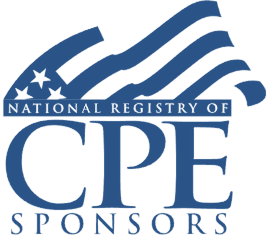Welcome! Save 30% on all CLE, CPE, and Professional Skills webinars, plus 15% off any annual pass with code CYBER2025
About the Course
Introduction
This course will review the research and development (R&D) credits offered by states. Our panel of state and local tax specialists will explain the credit requirements in specific states, review the federal guidelines for the R&D credit, and explain the process of applying for missed credits in prior years.
Description
R&D credits are a valuable, often overlooked, tax incentive. Even small businesses making minor improvements to a product or process can qualify. As a tax credit rather than a tax deduction, the R&D credit can provide dollar-for-dollar tax savings for cash-strapped businesses. Companies that missed the credit in the past could be eligible to claim the credit retroactively.
Tax practitioners who only consider the federal R&D credit could be overlooking half the tax savings of this credit. Currently, more than 35 states offer an R&D credit. Many states follow the federal guidelines, but there are differences. Utah's R&D credit, for example, is the sum of three credits:
- 5 percent of qualified expenses for increasing research activities in Utah above a base amount;
- 5 percent of certain payments made to a qualified organization increasing basic research in Utah above a base amount; and
- 7.5 percent of qualified research expenses in Utah for the current taxable year.
California does not allow an R&D credit to be carried back but does allow the credit to be carried forward indefinitely. Most states follow the federal definition of qualified research expenditures. SALT practitioners working with multistate businesses need to know which states offer this valuable credit and the states' eligibility requirements.
Listen as our panel of SALT experts provides specific state examples of the R&D credit for advisers working with multistate businesses.
Presented By

Mr. Belza is a Manager in Cherry Bekaert’s Tax Credits & Incentives Advisory practice and is located in the Raleigh, NC office.

Ms. Kohrs is a Director in Cherry Bekaert’s Tax Credits & Incentives Advisory practice in the Tysons Office. With strong data and analytical skills, including the use of Alteryx, she helps the Firm with strategic developments of numerous firm wide engagement enablement tools. Ms. Kohrs has helped client teams establish their Research Tax Credit study process and achieve significant tax savings. Her focuses include research credit studies in the automotive, pharmaceutical, health & life sciences, aerospace and defense, financial institutions, manufacturing, and computer software industries. Additional areas of experience include Section 174 Research Expenditures, UNICAP, accrued bonus, inventory accounting, and other accounting method changes and associated calculations.

Mr. Wainwright has more than 25 years of tax advisory experience and works with multi-national, public and closely held companies in several industries. He sits on the firm's Manufacturing and Distribution Team, and on the National Association of Manufacturers' Tax Steering Committee and Tax Policy and R&D Coalition.
-
BARBRI is a NASBA CPE sponsor and this 110-minute webinar is accredited for 2.0 CPE credits.
Date + Time
- event
Wednesday, September 7, 2022
- schedule
1:00 p.m. ET./10:00 a.m. PT
- The Research & Development Credit
- Federal R&D credit
- Specific state R&D Credits
- California
- Connecticut
- Florida
- Georgia
- Maryland
- Massachusetts
- Michigan
- New Jersey
- Ohio
- Pennsylvania
- South Carolina
- Texas
- Utah
- Vermont
- Virginia
- Retroactive application for R&D credits
The panel will cover these and other critical issues:
- How the R&D credit operates in different states
- Examples of eligibility requirements for the R&D credit in specific states
- Which taxpayers could be eligible to take the R&D credit in prior years
- Differences between the federal and certain state R&D credits
Learning Objectives
After completing this course, you will be able to:
- Identify federal eligibility requirements for R&D credits
- Determine qualifications for the New York Excelsior R&D credit
- Decide specific states offering R&D credits
- Ascertain which companies could be eligible for R&D credits in prior years
- Field of Study: Taxes
- Level of Knowledge: Intermediate
- Advance Preparation: None
- Teaching Method: Seminar/Lecture
- Delivery Method: Group-Internet (via computer)
- Attendance Monitoring Method: Attendance is monitored electronically via a participant's PIN and through a series of attendance verification prompts displayed throughout the program
- Prerequisite: Three years+ business or public firm experience preparing complex tax forms and schedules, supervising other preparers or accountants. Specific knowledge and understanding of SALT taxation, nexus and apportionment as it applies to multi-state businesses.

BARBRI, Inc. is registered with the National Association of State Boards of Accountancy (NASBA) as a sponsor of continuing professional education on the National Registry of CPE Sponsors. State boards of Accountancy have final authority on the acceptance of individual courses for CPE Credits. Complaints regarding registered sponsons may be submitted to NASBA through its website: www.nasbaregistry.org.

BARBRI CE webinars-powered by Barbri-are backed by our 100% unconditional money-back guarantee: If you are not satisfied with any of our products, simply let us know and get a full refund. Contact us at 1-800-926-7926 .
Unlimited access to premium CLE courses:
- Annual access
- Available live and on-demand
- Best for attorneys and legal professionals
Unlimited access to premium CPE courses.:
- Annual access
- Available live and on-demand
- Best for CPAs and tax professionals
Unlimited access to premium CLE, CPE, Professional Skills and Practice-Ready courses.:
- Annual access
- Available live and on-demand
- Best for legal, accounting, and tax professionals
Unlimited access to Professional Skills and Practice-Ready courses:
- Annual access
- Available on-demand
- Best for new attorneys
Related Courses

Commonly Overlooked State Tax Credits and Incentives: R&D, Investment, Jobs Tax Credits, and More
Tuesday, January 20, 2026
1:00 p.m. ET./10:00 a.m. PT

Combining Cost Segregation With Section 1031 Exchanges: A Significant Tax-Savings Strategy
Tuesday, January 27, 2026
1:00 p.m. ET./10:00 a.m. PT

Why LIFO, Why Now? Turn Tariffs Into Tax Savings in 2025
Friday, December 12, 2025
1:00 p.m. ET./10:00 a.m. PT

State Depreciation Adjustments: Handling Conformity Issues
Available On-Demand



